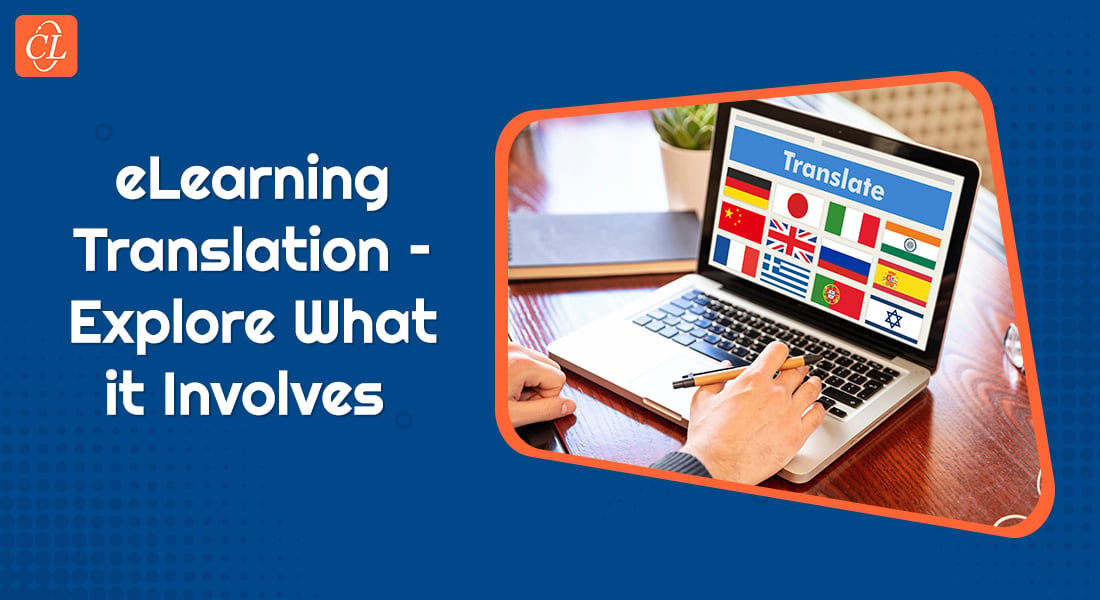Top 6 eLearning Translations Methods [Infographic]
![Top 6 eLearning Translations Methods [Infographic] Top 6 eLearning Translations Methods [Infographic]](https://blog.commlabindia.com/hubfs/blogs/top-elearning-translations-methods-infographic.jpg)
“Global” is the hallmark of the modern world. It stands as the defining characteristic, where interconnectedness transcends borders and cultures. As rightly said by Zygmunt Bauman, “Globalization is a process that forces us to confront the diversity of the world in a new way.” This is true for learning and development too as businesses are going global and have an international workforce.
But a major challenge faced by such companies during corporate training is language barrier. So how can you overcome this challenge? Well, eLearning translations can save the day for you. In this blog, we’ll see the benefits of eLearning translations and then learn about the top 6 eLearning translation methods.
Are you ready?
Benefits of eLearning Translations
Improves Understanding and Knowledge Retention
The impact of eLearning translations on knowledge retention cannot be overstated. Studies show that learners grasp and retain information more effectively when presented in their native language. Therefore, by providing training materials to learners in their native languages you can promote better concept understanding, retention, and application.
→ Download Now: How L&D And Business Can Align to Conquer The Future Of Work
Fosters Learner Engagement
Apart from better understanding and retention, eLearning translations also contribute to improved learner engagement and overall satisfaction. Providing information in learners’ native language enhances the learning experience by making it more relatable and interesting. Learners can connect with the material on a personal level, leading to increased motivation and a higher chance of completing the training course successfully.
Increases Accessibility and Inclusivity
Traditional eLearning courses often pose a major linguistic challenge for non-native speakers. It hinders their ability to fully understand and interact with the content. eLearning translations help you break down these barriers by promoting inclusivity and diversity in the learning process. Through eLearning translations, you can attend to the varied learning and linguistic backgrounds of the learners to ensure equal access to learning and growth opportunities for all.
Inclusivity is an important factor while dealing with diverse workforce and eLearning translations have a positive impact on it. Translated eLearning courses influence employee morale and productivity as they help employees realize that their language and cultural nuances are acknowledged. This motivates them and keeps them committed to organizational and individual development.
Enhances Reach and Global Expansion
eLearning translations serve as a passport to global expansion for companies and organizations. By translating eLearning courses into native languages, you can provide effective global training. The results will be reflected in the form of streamlined processes, better services, and improved customer satisfaction. This then translates to improved company reputation and opportunities for growth and expansion. It not only enhances the potential for increased revenue and market share but also fosters a sense of inclusivity and cultural sensitivity.
Top 6 eLearning Translations Methods
Parting Thoughts!
While eLearning is ensuring learning in an effective and engaging manner, eLearning translations are holding the fort for non-native speakers. They facilitate equal learning opportunities for all and open doors to a world of possibilities. Employees can benefit greatly from eLearning translations in terms of improved understanding, retention, and application. At the same time, organizations have their fair share of benefits too. They can look forward to better reach and expansion, resulting in a wide customer base and more revenue. And for successful alignment between L&D and business, check out the eBook below.





![Why Choose Lectora for eLearning Translations? [Infographic]](https://blog.commlabindia.com/hubfs/blogs/elearning-translations-why-choose-lectora-info.jpg)

